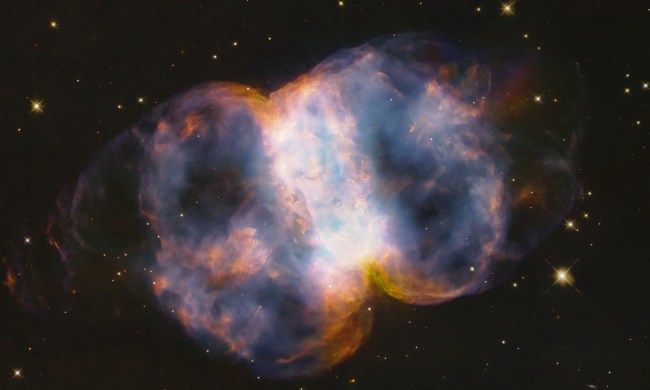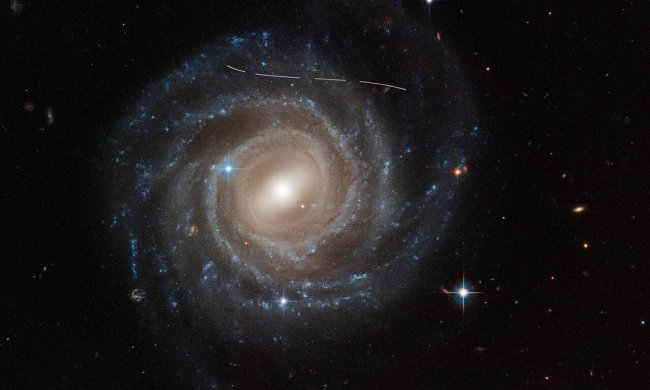The majority of the thousands of galaxies we’ve discovered out in the universe fit into relatively well-defined categories: spiral galaxies like our Milky Way, elliptical galaxies which are long and thin, and lenticular galaxies which are somewhat halfway between the two. But some galaxies are oddities that don’t fit in these clear shapes, and those are called irregular galaxies. These galaxies can be chaotic and nonsymmetrical and can be formed by gravitational forces pulling regular galaxies into strange shapes.
This week’s image from the Hubble Space Telescope shows one such irregular galaxy called NGC 1156. It doesn’t have the reaching arms of a spiral galaxy nor the long shape of an elliptical, but it has characteristics of both. It has thousands of bright stars with areas of busy star formation like you’d expect to see in a spiral galaxy and the soft diffuse glow around its center suggests an elliptical. It’s also a small galaxy, so it’s a type classified as an irregular dwarf galaxy.

But NGC 1156’s unusual structure is not its only feature which makes it intriguing.”It has a variety of different features that are of interest to astronomers,” Hubble scientists write. “A dwarf irregular galaxy, it’s also classified as isolated, meaning no other galaxies are nearby enough to influence its odd shape and continuing star formation. The extreme energy of freshly formed young stars gives color to the galaxy, against the red glow of ionized hydrogen gas, while its center is densely-packed with older generations of stars.”
This image is an updated version with new data, following a previous Hubble image of the galaxy released in 2019. A telescope like Hubble is extremely over-subscribed, meaning that many more researchers want to use it than there is time for, so every minute of observation time is precious. However, many observation programs need to use the telescope for extended periods of time, or can only be done at certain times. So there is some amount of free time when Hubble isn’t being used for other projects when it is given over to gap-filling programs like Every Known Nearby Galaxy. This project observes nearby galaxies like NGC 1156 to get more information about the type of stars that reside within them.



